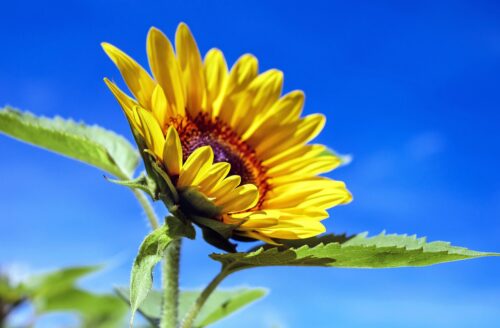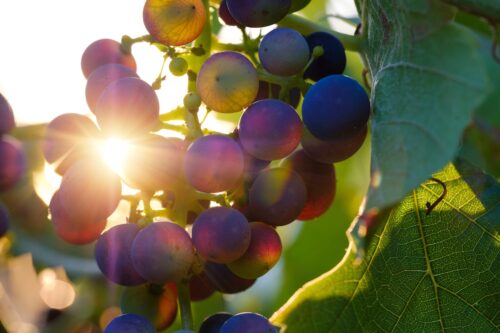Can Plants See? Secret Revealed by unlocking the mystery and secret behind Plant Perception in this disclosure.
Plants are incredible living organisms that play a vital role in this ecosystem. They provide oxygen, food, and materials for various products. People often think of them as stationary, passive beings, but recent research has sparked a fascinating question: Can plants see? In this article, you will explore the surprising world of plant perception and discover how plants sense the world around them.
Find Do Plants Cry When Stressed?
Plants and Light Perception

One of the most intriguing aspects of plant perception is their ability to detect light. While they don’t have eyes, plants have special cells called photoreceptors that allow them to sense light. The primary photoreceptors in plants are called phytochromes and cryptochromes. These photoreceptors help plants determine the direction, intensity, and quality of light.
Phototropism: Bending Towards the Light

One well-known example of plants ability to see is phototropism, the phenomenon where plants grow towards sources of light. When a young plant senses light coming from one direction, it adjusts its growth by bending toward the light source. This incredible ability allows plants to maximize their exposure to sunlight, which is essential for photosynthesis, the process by which they convert light energy into chemical energy to fuel their growth.
Chemical Senses: Detecting Enemies and Allies
Plants also possess chemical senses that enable them to detect and respond to various substances in their environment. They can detect chemical cues from neighboring plants, which helps them compete for resources, ward off herbivores, or form beneficial relationships with other species.
For instance, when a plant is attacked by herbivores, it can release volatile organic compounds (VOCs) into the air. Nearby plants can sense these VOCs and prepare their own defenses, such as producing toxins or chemical compounds that deter herbivores. This communication system among plants is known as “plant-plant signaling.”
Read Benefits of a Tablespoon of Sugar While Planting
Roots and Gravity Sensing
Plants don’t just perceive their above-ground environment; they also have a remarkable ability to sense what’s happening below the surface. Roots are essential for anchoring plants and absorbing water and nutrients. They also have a gravity-sensing mechanism that helps plants grow in the right direction, ensuring that the roots grow down into the soil and the shoots grow upwards toward the light.
Gravity-sensing in roots is accomplished through specialized cells called statocytes. These cells contain dense particles called statoliths, which settle in response to gravity. As statoliths move, they signal the plant to grow in the correct direction. This gravity-sensing ability is crucial for a plant’s overall stability and growth.
Photoreceptors: The Light-Sensing Molecules

Photoreceptors are specialized molecules found in various organisms, including plants, that enable them to detect and respond to light. These remarkable molecules are at the heart of how organisms perceive and interact with their environment, allowing them to navigate their surroundings, adjust their growth patterns, and even regulate important biological processes.
Types of Photoreceptors
Plant Photoreceptors:
- Phytochromes: Phytochromes are one of the primary types of photoreceptors in plants. They play a crucial role in the regulation of various growth and developmental processes. These molecules can exist in two forms: Pr (red light-absorbing) and Pfr (far-red light-absorbing). When exposed to red light, phytochromes convert from Pr to Pfr, triggering various cellular responses. Conversely, exposure to far-red light converts Pfr back to Pr.
- Cryptochromes: They are another type of photoreceptor in plants. They are involved in processes like photomorphogenesis (the development of plants in response to light) and the regulation of the circadian clock. Cryptochromes are sensitive to blue and UV-A light.
LEARN How to Repair Tree Struck by Lightning
Functions of Photoreceptors

- Photosynthesis Regulation: Photoreceptors, such as phytochromes, regulate photosynthesis by monitoring the quality and quantity of light, ensuring efficient energy conversion.
- Photomorphogenesis: They control various aspects of plant development, including seed germination, stem growth, leaf expansion, and flowering in response to light.
- Directional Growth (Phototropism): They, particularly phytochromes, enable plants to grow towards light sources, optimizing their light exposure for photosynthesis.
- Circadian Rhythms: Photoreceptors help plants maintain their internal biological clock, influencing processes like leaf movement, stomatal regulation, and gene expression.
- Shade Avoidance Response: Plants use photoreceptors to detect changes in light conditions and respond by elongating stems and adjusting leaf angles to compete for sunlight.
- Flowering Time Regulation: Photoreceptors, such as phytochromes, sense day length (photoperiod) and temperature cues to determine the appropriate time for flowering.
- Defense Mechanisms: Photoreceptors can trigger defense responses when plants detect certain types of light damage, like UV-B light.
- Seed Germination: They help seeds sense light and decide when to initiate the germination process.
- Environmental Adaptation: Photoreceptors enable plants to adapt to changing light conditions, influencing growth patterns and resource allocation for survival and reproduction.
FIND What Do Sunflowers Represent
Conclusion- Can Plants See?

Plants don’t see like humans, but they have light-sensing cells called photoreceptors. These “plant eyes” help them detect light sources and adjust their growth, defend against harm, and even time their activities. While different from our vision, plants have a remarkable way of perceiving and responding to their environment, proving they’re not just passive beings but active participants in the natural world’s intricate dance.



